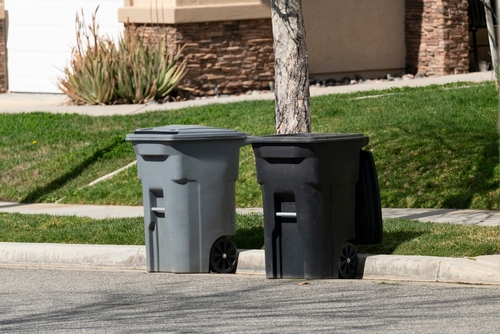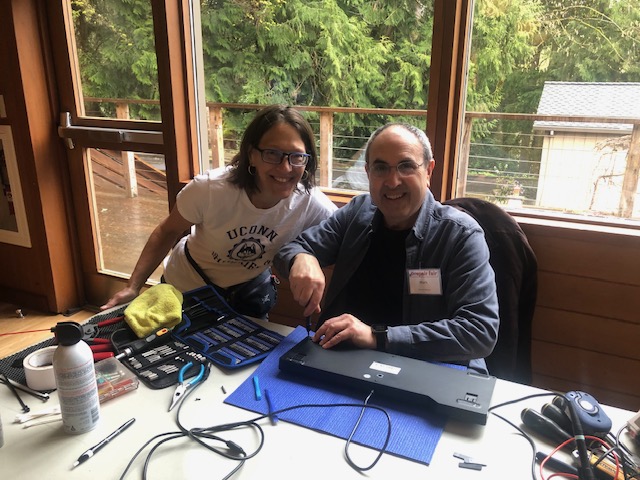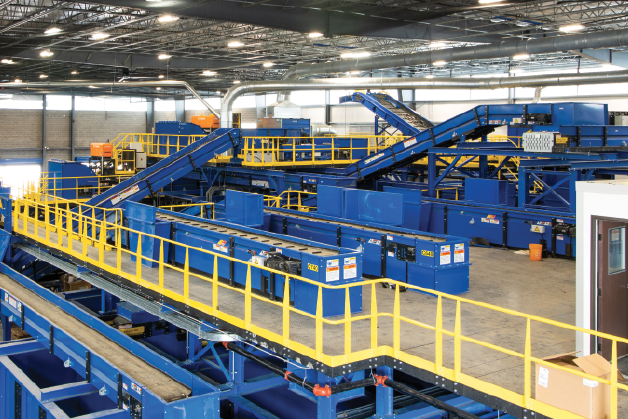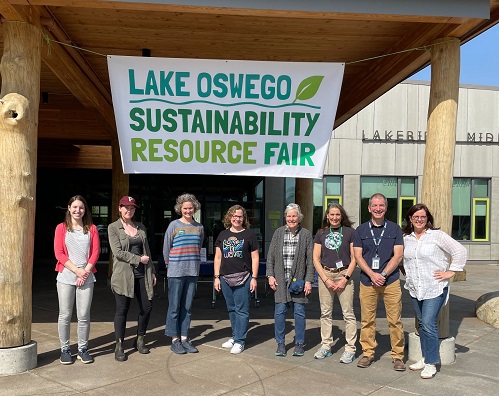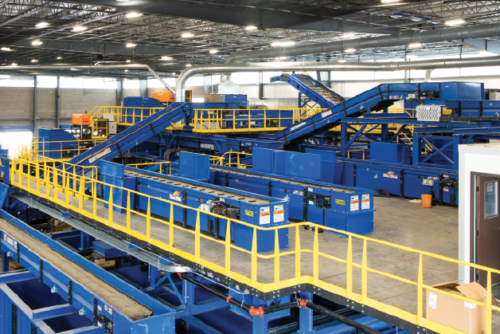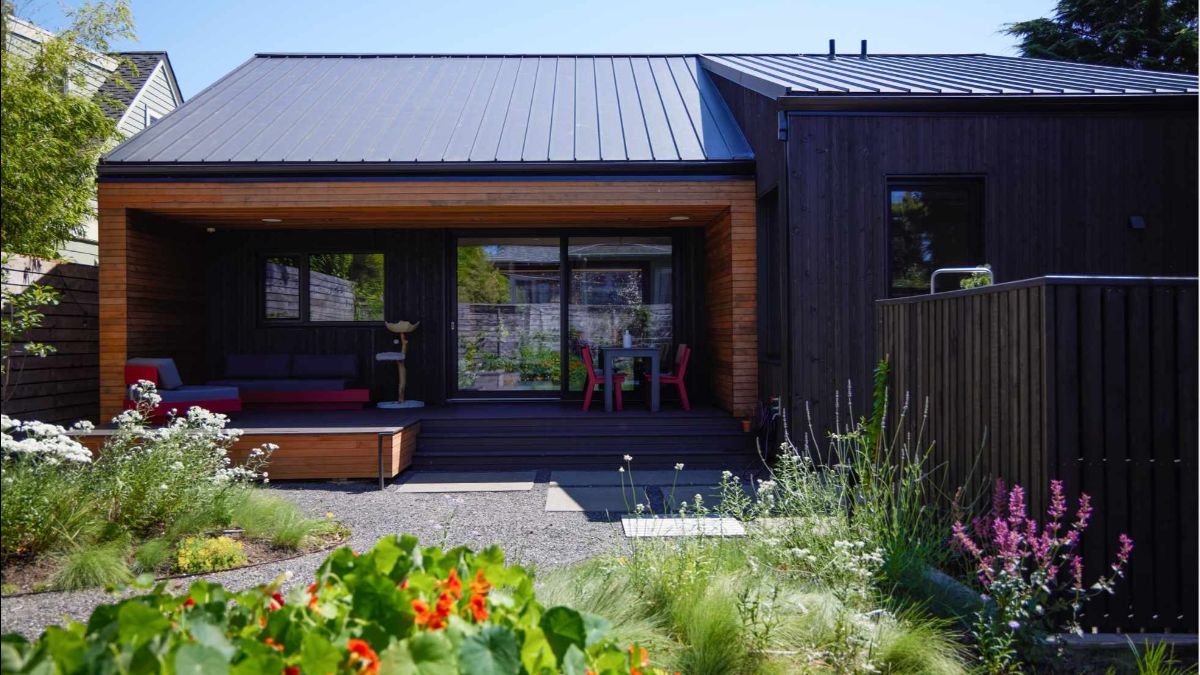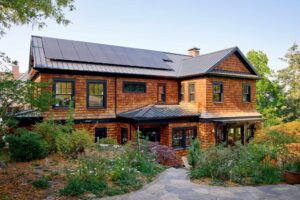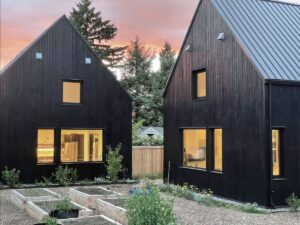LOSD School Board Candidates Responses to RtR/LOSN Questions

Respond to Racism (RtR) and the Lake Oswego Sustainability Network (LOSN) do not endorse individual candidates. However, we are committed to providing information about the candidates’ positions and thoughts on equity and sustainability. We reached out to the five candidates that are running for the three open school board positions:
- Lena Elbakshish (Position 2)
- Neelam Gupta (Position 2)
- Brian Bills (Position 3)
- Kasey Adler (Position 4)
- Katherine Lupton (Position 4)
We appreciate their time and consideration of these important issues and the thoughtful answers that they provided to us. Below are the questions and the candidates’ complete, unedited responses (in the order of the positions they are running for).
Question 1: The LOSD website states "the Board appoints advisory committees to consider matters of district-wide importance." Beyond “consideration,” what, in your opinion, is the role of the advisory committees (SACs, strategic plan and academic advisory committees)? How would/do these committees help you in your role as a board member? What changes would you make to improve the effectiveness of these committees (structure, board interaction, recruitment, agenda-setting)?
Lena Elbakshish (Position 2): While the Board tasks advisory committees with “considering” district-wide matters, I believe their role should go beyond that to include influencing, informing, and advising on key decisions. Committees like SACs, strategic planning, and academic advisory groups should serve as a bridge between the community and the board—bringing forward diverse perspectives, surfacing unmet needs, and identifying opportunities the School Board might otherwise miss.
To improve effectiveness, I’d advocate for:
- Clearer mandates and scopes so committee work is purposeful and aligned with board goals.
- More diverse recruitment, including outreach to underrepresented voices.
- Structured collaboration with the board, which could include regular joint sessions and/or frequent, structured reporting.
- More transparency in agenda-setting, allowing community members and students to suggest topics.
Neelam Gupta (Position 2): School board members are elected to represent all residents in Lake Oswego, and advisory committees play a key role in helping us understand the needs and perspectives of students, educators, families, and community members. These committees offer the school board and district valuable insights that help inform board decisions and support student success, especially when the committees include engaged community members.
These committees provide thoughtful feedback, raise important questions, and contribute diverse viewpoints that shape strategic direction. We’ve seen their impact through recommendations made to the school board which have been implemented, including but not limited to initiatives like the hiring a Belonging Coordinator, developing a Sustainability TOSA role, introducing BizTown for all 5th graders, and conducting a special education evaluation.
Committees need consistent attendance and active participation from appointed members to be effective and ensure balanced, productive discussions. Encouraging members to connect with the broader community between meetings also helps bring a wider range of perspectives to the table. As far as recruitment, we have tried to advertise in the spring with little success, and more recently, we moved to the fall in the hope of recruiting more parents.
Brian Bills (Position 3): Advisory committees are most valuable not simply as consultative bodies, but as engines for perspective, systems thinking, and collaborative design. They help board members and administrators remain open-minded and responsive to changing conditions and emerging needs. They offer a structured forum to pilot ideas, test assumptions, and surface blind spots that may not be visible through traditional channels.
The greatest challenge is not outreach—it’s participation. We often receive passionate engagement through public testimony or email, but those same voices are less likely to engage in the slower, more deliberative work of committee service. There is an opportunity here: if we can draw those advocates into the committee process—where ideas are developed, shaped, and stress-tested—we can better connect passion to policy.
Kasey Adler (Position 4): The most effective boards seek broad input from the community so they can make informed decisions. I’m currently serving on the Westridge SAC as well as the LO School Foundation Board, both of which engage with the district often, particularly around agenda-setting and prioritization. I would lean into these collaborations with our advisory committees. I will encourage the school board to invite all voices to be heard amidst the board’s deliberations.
Additionally, we should be intentional and focused in seeking broad representation from the community at large in our recruiting efforts. This school board will be most successful when intentionally seeking a diversity of perspectives and opinions.
Katherine Lupton (Position 4): One of my priorities as an LOSD School Board member is to empower the community to provide input to the Lake Oswego School Board. This can be achieved by increasing opportunities for students and families to connect with board members, in both formal and informal settings. Improved feedback can be gathered by seeking out and prioritizing feedback from teachers and staff in the district. And finally, we must partner with stakeholder groups such as Stand for Children, LOSN, Oswego Lake Watershed Council, Prep LO, LO for Love and Respond to Racism to incorporate neighborhood perspectives in School Board decisions.
Question 2: During the February 24 School Board meeting, it was revealed that graduation rates for Hispanic students have dropped and that graduation rates for underserved students have dropped nearly 10%. Reading and math proficiency have also disproportionately dropped for Black elementary students in the district. How will you combat these disparities in education outcomes?
Lena Elbakshish (Position 2): The recent data is unacceptable and deeply concerning. Every student—regardless of background—deserves equitable opportunity and support to succeed. Here’s how I’d approach closing these gaps:
- Data transparency: Disaggregate and publish achievement data regularly.
- Targeted supports: Expand tutoring, culturally responsive teaching, and mentorship programs for underserved students.
- Early intervention: Identify students at risk of falling behind earlier, particularly in elementary grades.
- Community engagement: Partner with families and community leaders to co-create solutions.
- Accountability: Ensure school leaders have measurable equity goals and are held accountable for progress.
Neelam Gupta (Position 2): The data presented requires further explanation, which was discussed during the February 24 meeting, on both graduation rates and reading/math proficiency.
Our district’s graduation rates continue to trend upward for all students. The graduation rates presented include students from Parrott Creek, a separate program temporarily located within our boundaries but not operated by LOSD. While the state attributes this data to our district while it is located in our boundaries, we do not oversee the program. When Parrott Creek data is removed, the Class of 2024 from Lake Oswego, Lakeridge, and Harmony High Schools achieved a 96.32% graduation rate, which is up from 95.8% last year. Harmony High School is a LOSD charter school that operates independently.
Lakeridge and Lake Oswego High Schools alone reached 97.34% graduation rate for all students and 95.7% for Hispanic students, reflecting the dedication of our students, educators, and families.
The data presented on reading/math proficiency is from iReady, which is not meant to measure academic achievement. iReady is a formative assessment that LO educators use with K-8 students to determine a student’s needs, differentiate their learning to their needs, and monitor their progress throughout the school year. The school board receives updates on iReady data throughout the school year, and these results were on the winter assessment showing progress since the fall assessment.
That said, disparities in outcomes, whether in graduation rates, academic achievement, or student experiences, require our full attention. As a board, we receive educational data every month where LOSD staff show and explain the current data, and school board members have discussions to identify areas in which progress has been made and other areas in which improvement is needed. We remain committed to identifying and addressing gaps, especially for historically underserved students. Graduation rates, and the increasing trend over the past 10 years, reflect the support students receive throughout their K–12 experience. We continue to invest in early interventions, culturally responsive teaching, and strong family partnerships to ensure every student has what they need to succeed.
Brian Bills (Position 3): The reported drop in Hispanic graduation rates is almost entirely driven by charter schools affiliated with the district but not governed or operated by LOSD. When those schools are disaggregated, LOSD’s Hispanic graduation rates remain above 95%. Even so, disparities in learning outcomes for underserved students remain a critical challenge—and one that demands thoughtful innovation, not just concern.
I believe AI can be part of the solution. Academic support resources—like tutors, writing centers, or test prep—are disproportionately accessed by students with more resources and time. Generative AI offers a way to democratize access to these tools, creating 24/7 academic support for all students, regardless of income or background. Through my work on the district’s AI Task Force, and a separate initiative with Ms. Washington, I am committed to exploring how this technology can help close opportunity gaps by scaling support and increasing equity of access.
Kasey Adler (Position 4): Those disparities are unacceptable. Everyone should graduate, and we should be working to deliver on that promise. We also need to recalibrate our performance metrics so we can more accurately identify where we must improve and where we must seek additional help and support for struggling students.
In our district’s next strategic plan, we should be asking thoughtful questions about how we can best serve all the communities in our district, particularly the underserved.
Katherine Lupton (Position 4): It is my priority to ensure that our School Board includes best practices and innovative research in every decision. We must create policies that adapt to current best practices and technologies. We must partner with teachers to develop more targeted training and support in current best practice reading and math techniques. We can provide training so that teachers can evolve with best practices and research, creating a teacher that is able to adapt and evolve with new innovations in our community and in our nation. We can lean on organizations such as Stand For Children (a group which endorsed me in this race), to guide us on best practices to life scores for reading proficiency. As a student in Salem-Keizer Public Schools, I attended Englewood Elementary, Parrish Middle School, Waldo Middle School, and North Salem High School. By the end of my K-12 education, I had received the equivalent of a full school year less instructional time than students who completed their education other cities in our nation. This calculation is made by taking into account the number of instructional days provided for our students per year.
I believe all students in Oregon deserve a school year that includes 180 instructional days per year, on par with the majority of the states in our nation. We must give our students the opportunity to start their classes in August, which will in turn give them a fair chance at achieving high ranking scores on national Advanced Placement tests and standardized exams.
Question 3: How do you envision the LOSD Board of Directors and the district engaging with community based sustainability and antiracism organizations? For example, the Coalition of Communities of Color’s “Cultivating Belonging in Clackamas County” report recommends dominant institutions partner with community based organizations and provides suggestions for effectively and ethically approaching those partnerships.
Lena Elbakshish (Position 2): The LOSD board should actively seek partnerships with organizations like the Coalition of Communities of Color. These groups bring expertise, lived experience, and community trust. We must:
- Approach as collaborators, not just benefactors—sharing power and decision-making.
- Fund partnerships so they’re sustainable.
- Co-create programs, particularly around belonging, mental health, and culturally specific supports.
Neelam Gupta (Position 2): Educational outcomes are strengthened through active engagement with our families and community. While our primary focus is on supporting students and staff within our schools, partnering with sustainability and antiracism organizations is essential to living out our core value of shared leadership.
These partnerships help us better understand and respond to the lived experiences of those we serve. They can also foster trust, build capacity, and create opportunities for collaboration that extend beyond the school day. As we face budget constraints and staff reductions, we will increasingly rely on community-based leadership to help us meet shared goals.
We have a strong history of collaborative work with community organizations, which allows us to incorporate diverse perspectives, amplify underrepresented voices, and ensure our practices are ethical, inclusive, and responsive. Building relationships with trusted partners committed to mutual respect will strengthen our work as a district and school board.
Brian Bills (Position 3): I support the district’s ongoing engagement with community-based organizations whose missions align with our values. These partnerships help foster trust, perspective, and accountability. They can amplify our reach and reflect our commitment to shared community goals. While the district’s core mission is to educate students, these relationships strengthen that mission by reinforcing the broader environment in which learning occurs.
Kasey Adler (Position 4): Collaboration and partnering is incredibly important to our success as a district. We should be leaning into the collaborations with the culture of belonging committee, the long range facilities planning committee, as well as the city’s sustainability advisory board towards implementing the CCC’s recommendations wherever possible. This is about ongoing dialogue, as I believe these collaborations thus far have moved the needle in our district. For example, it’s been fantastic to see solar panels being installed at our schools, as well as seeing earthquake retrofitting as a priority in the district’s bond proposals. The schools we’ve been building in Lake Oswego are gold standard for recycling and sustainability – it’s wonderful we’re acting to take care of our environment. I believe that new capital projects in our district should have sustainability planning incorporated upstream in their development. Working hand in hand with our community-based organizations will be key to effective implementation of those plans.
Katherine Lupton (Position 4): One of my priorities as an LOSD School Board member is to empower the community to provide input to the Lake Oswego School Board. Improved community feedback must be found by partnering with stakeholder groups such as Stand for Children, LOSN, Oswego Lake Watershed Council, Prep LO, LO for Love and Respond to Racism to incorporate sustainability and antiracism perspectives in School Board decisions. One way to do this would be to invite each of the organizations mentioned above to present to the School Board at least once per school year, providing their recommendations for best practices and ideas to improve our schools.
Question 4: Teach and Practice Sustainability is a pillar in the current strategic plan. Do you support including sustainability in the next strategic plan? Why or why not? How would you like to see sustainable practices addressed by the district in the future?
Lena Elbakshish (Position 2): Absolutely, sustainability should remain a pillar. It’s critical for the well-being of our students, our planet, and our community’s future. Sustainability education helps students become thoughtful, informed global citizens, and aligning district operations with sustainable practices models that commitment. I’d like to see:
- Green building standards for all renovations and new construction.
- School gardens and composting programs to engage students hands-on.
- Energy efficiency audits and shifts to renewable energy.
- Student-led climate action projects, integrated into curriculum and leadership opportunities.
Neelam Gupta (Position 2): I remain committed to ensuring sustainability remains in the next LOSD strategic plan. When LOSD begins to develop the next strategic plan later in 2025, we must examine the progress we have made towards achieving the priority. The strategic plan is designed to evolve as our district’s needs change. While our mission—to be a learning community dedicated to educational excellence and a culture of belonging—remains constant, the steps we take to fulfill that mission adapt over time.
If sustainability has become fully embedded in our district’s practices and culture, then it could possibly shift from a strategic priority to a foundational value that informs all areas of the district’s work. This is similar to how focusing on facilities in a past strategic plan laid the groundwork for long-term improvements. We continue to focus on facilities to ensure our students and educators have spaces supporting learning and belonging. Once a priority is firmly established, it no longer needs to be called out as a separate priority but continues to influence every part of the plan.
I support including sustainability in the next strategic plan, whether it is an area that requires focused attention and growth or as a core foundational value. If it has become part of our district’s daily operations, then we should still uphold it as a core value while making space to include emerging priorities that will help us further our mission.
In the future, I’d like to see the school district build on its solid foundation to keep doing what we’ve put into place, as well as continue looking for new opportunities to grow and deepen engagement with students, educators, families, and the broader community. Sustainable practices are most impactful when integrated into daily operations, curriculum, and culture and when everyone has a chance to contribute.
Brian Bills (Position 3): Sustainability remains a core value across our district. Whether or not it is elevated again as a pillar in the next strategic plan, I expect our work in this space to continue and evolve. The strategic pillars serve as focal points—intended to sharpen attention and accelerate progress. Given the traction we’ve gained around sustainability, we may be able to sustain momentum while also targeting new areas of need. Regardless of structure, I will continue to support sustainability efforts across operations, instruction, and leadership.
Kasey Adler (Position 4): I 100% support including sustainability in the next strategic plan. It has been prioritized within our bond strategy as well and the results so far have been great to see. Operationally, we can reinforce the importance of this subject through daily practices. For example, simple processes like how we handle our garbage and recycling at our schools can be impactful – always with the goal in mind of achieving a net zero effect on our environment. And we should continue to include sustainability within all of our capital improvement projects in the future.
Katherine Lupton (Position 4): I am a candidate greatly values sustainability, and has proven this in our Lake Oswego community through both my words and my actions. In 2021, I was endorsed by the Oregon League of Conservation Voters (OLCV), after an extensive endorsement process. This is because I am a candidate that values our native species, our tree canopy, and environmental best practices in our schools.
Some ideas for sustainable action include:
- Electrifying our fleet of school buses
- Focusing on green infrastructure throughout the school district- which is
more than just planting trees! I have a Backyard Certified Habitat and know
the true meaning of green infrastructure. - Developing an actionable climate change plan for the district
- Banning gas powered blowers and lawn mowers and switch fully to electric
options
Question 5: We’ve heard from current and former students that taking Ethnic Studies helps them feel better prepared to work with people from diverse backgrounds. Will you support reinstating Ethnic Studies and making it mandatory? If so, how will you go about it? If not, why?
Lena Elbakshish (Position 2): Yes, I support reinstating Ethnic Studies and making it a core graduation requirement. It prepares students to work in diverse environments and fosters empathy, understanding, and critical thinking. To make it happen:
- Partner with educators and community members to design the curriculum.
- Provide training and support for teachers.
- Ensure it’s well-resourced and embedded into core subject areas.
Neelam Gupta (Position 2): I share your commitment to ensuring that all students engage with diverse histories, perspectives, and experiences as part of their LOSD education. In 2024, the State Board of Education adopted updated social science standards that embed Ethnic Studies across all grade levels and content areas, replacing the previous multicultural standards.
These new standards require instruction that fosters safe, inclusive environments where students can explore topics such as equity, racism, discrimination, and identity. They also integrate content from SB 13 (Tribal History/Shared History) and SB 664 (Holocaust and Genocide Studies), creating a more comprehensive and inclusive curriculum.
All Oregon school districts must implement these standards by 2026, and Lake Oswego has already begun incorporating them into required K–12 history courses starting in 2024. My focus is on ensuring that these new required standards are being fully and effectively implemented across all grade levels, so that every student benefits from this important learning throughout their entire educational journey. These standards offer a core understanding of the topics covered in an introductory Ethnic Studies class for all students. In addition, teachers can propose a new course to be added with unique content not already addressed in our curriculum, which would be offered if there was sufficient student interest.
Brian Bills (Position 3): Ethnic Studies plays an important role in developing civic awareness and cross-cultural competency. I’m pleased that LOSD currently integrates these themes across all grade levels in developmentally appropriate ways. I support auditing the current scope and sequence of how these themes appear across the 9–12 curriculum and would welcome the opportunity to offer a more focused elective course for students seeking a deeper exploration.
That said, I do not support requiring a standalone Ethnic Studies course for graduation. As an IEC working with students applying to some of the most competitive college programs in the country, I see firsthand how limited scheduling flexibility can affect opportunity. With recent graduation requirement changes from ODE, mandating an additional course could constrain students’ ability to take AP classes, world languages, or advanced electives aligned with their academic goals. We must be careful not to reduce a student’s access to opportunities in the name of expanding them.
Kasey Adler (Position 4): To go even broader, I believe Ethnic Studies should be incorporated into the whole fabric of our curriculum; embracing different cultures, how and why people are different, and how we can all support each other. We should consider a curriculum review and instructional roadmap, K-12, to see what gaps exist in these efforts, and work with the superintendent to ensure we’re addressing deficiencies. We should also invite feedback from teachers and students on how we can supplement these efforts, and get students involved in sustainability-related projects early and often, both inside the buildings and in the community.
Katherine Lupton (Position 4): As a student of Education Policy at Johns Hopkins University, we focused heavily on equity work, protecting vulnerable students, and supporting voices from all backgrounds and cultures. Both my degree and my experiences in Baltimore and in Salem prepared me well for classroom teaching and for leadership. In our graduate work, we focused extensively on DEI and CRT best practices and techniques. After receiving my M.S.Ed. degree from Johns Hopkins University, I was able to apply the DEI and CRT practices from my degree program in my Baltimore classroom on a daily basis, to great success. It is important that all children feel included and honored, and can see themselves reflected in their curriculum. I am passionate about the importance of such programs, and I feel they should be included in public school curriculums.
Question 6: We have heard from our students that climate literacy is critical to be prepared for life after graduation. How would you ensure our students are learning about the climate crisis at all grade levels?
Lena Elbakshish (Position 2): We need a K–12 approach to climate education:
- Integrate climate topics into science, social studies, and even language arts at age-appropriate levels.
- Partner with local environmental groups for guest speakers, field trips, and project-based learning.
- Empower student voices to lead climate advocacy initiatives.
Neelam Gupta (Position 2): State academic standards guide what students learn in schools. Just as the State Board of Education recently embedded Ethnic Studies into updated social science standards, I support a similar approach for climate literacy, integrating it across all grade levels and subject areas. Embedding climate education into the existing curriculum ensures all LOSD students gain the knowledge and skills they need to understand the climate crisis and prepare for the future.
The goals of climate literacy—understanding change, developing critical thinking, promoting engagement, fostering responsibility, and preparing for future careers—align closely with the fundamental skills we strive to build in every student. We aim to teach students how to think, not what to think. These skills are not only essential to climate education but are valuable across all subjects, lessons, and life paths.
Brian Bills (Position 3): Student voice is powerful, and I’ve been encouraged to see students advocating for more robust climate education. As a parent with children in elementary, middle, and high school, I’ve seen firsthand how our curriculum sparks meaningful dialogue at home. The climate conversations we have at our dinner table are organic, informed, and thoughtful—clear evidence that the work happening in classrooms is already impactful.
At the high school level, LOSD offers several courses that explicitly build climate literacy:
- Sustainability (Grades 9–12) – A project-based course on environmental justice, systems thinking, and climate advocacy.
- AP Environmental Science (Grades 11–12, 10 with approval) – A college-level exploration of ecosystems, resource use, and sustainability practices.
- Ecology and Conservation (Grades 10–12) – A field- and lab-based course on biodiversity, conservation, and climate science.
- Oceanography (Grades 11–12) – A cross-disciplinary course on marine systems, climate interaction, and human impact.
At the middle school level:
- 6th Grade Science introduces weather, climate systems, and foundational environmental concepts.
- 7th Grade Science builds on this with ecology, energy transfer, and environmental systems.
At the elementary level, environmental awareness is introduced early through standards-aligned lessons.
Students may also pursue independent study, sponsored by faculty, to go deeper into sustainability-related topics based on their individual interests. This tiered approach reflects best practices in climate education: systems thinking, interdisciplinary learning, and real-world application.
Kasey Adler (Position 4): Emphasizing science curriculum at the elementary levels is a good place to start, followed by rigorous science course offerings at the middle/high school levels to reinforce a strong foundation in these subjects. Of all the hits to our students’ proficiency scores in Lake Oswego, science has been the most profound. Our 11th grade scores have dropped from 81% a decade ago to just 44% last year. If we want our children to be prepared to contribute to the health of our environment after graduation, we should reinvigorate our commitment to science in Lake Oswego, and get students involved in projects across the city.
Katherine Lupton (Position 4): As a School Board member and environmentalist, I will always champion climate literacy in our LOSD public schools. I will prioritize climate literacy and ensure that students are learning about the climate crisis at all grade levels.
Question 7: School administrations tend to be reactive rather than proactive when it comes to addressing the needs of BIPOC students. For example, students often have to come to their administrators with requests, and are rarely, if ever, asked what they need unprompted. What steps will you take to ensure that schools are more proactive in addressing the needs of BIPOC students? For example, one of the most common obstacles BIPOC students report is navigating microaggressions. How will you implement a district-wide approach for addressing microaggressions?
Lena Elbakshish (Position 2): We must shift from reactive to proactive. Steps I’d advocate for:
- Routine listening sessions with BIPOC students and families—on their terms.
- Culturally responsive professional development for all staff.
- School climate audits, including qualitative and quantitative data on student experiences.
- Clear district-wide protocols for addressing microaggressions, with accountability for follow-through.
Neelam Gupta (Position 2): I have seen our school administrators’ commitment to listening, learning, and acting in support of all students’ needs, including changes in policies, practices and attitudes. I bring my lived experiences as a sibling to a graduate, a parent to a student, and a BIPOC person, plus my professional expertise as a public health professional to school board service. Ensuring that all students, especially BIPOC students, feel valued, seen, and supported must be an ongoing and intentional part of a K–12 education.
To continue to move from responsive to more proactive, we must continue offering structured opportunities for students—particularly those from historically marginalized groups—to share their experiences and perspectives. Currently, we conduct consistent listening sessions (e.g. Superintendent Student Council), student advisory groups (Engage to Change and No Place for Hate), and culturally responsive climate surveys (YouthTruth) that help inform building-level and district-wide decisions. In addition, we have affinity groups for students on the secondary school level focused on supporting students with shared identities or experiences.
Addressing microaggressions requires our continued districtwide approach that includes staff training, reporting and response protocols, and a shared understanding of how microaggressions impact student well-being and learning. We continue to equip staff and students with the tools to recognize, name, and respond to harm in a way that supports growth, accountability, and belonging.
Brian Bills (Position 3): Combating microaggressions and addressing the needs of BIPOC students cannot be handled transactionally. It requires relational, sustained engagement. That means:
- Creating regular listening opportunities with BIPOC students.
- Offering staff training to better recognize and address microaggressions.
- Embedding responsibility for inclusion into building-level leadership and ongoing school culture work.
We must shift from isolated responses to systemic sensitivity and readiness.
Kasey Adler (Position 4): Issues like these are important to address early and often – everyone must be respectful to one another. Professional development training for our staff to be responsive to the needs of students of all backgrounds is essential. So is working with the culture of belonging to provide a continuous and consistent sounding board on these efforts, and constantly reinforcing them at our district cultural events and workshops throughout the year.
Katherine Lupton (Position 4): I am the proud product of an Oregon public school education, which is why I prioritize and champion inclusion and special education efforts, rigorous academic offerings throughout the district, quality curriculum design, and parent and student input. Nothing is more important to me providing an equitable education and providing opportunities for all of our students to succeed.
While living in Baltimore, I taught in the Baltimore City Public Schools and participated with my high school students in the “Advocacy Project”–a program I founded that partners students with diverse urban neighborhood groups. This program’s goal was to increase student awareness of BIPOC communities in Baltimore and to allow students to connect personally with community members who may have had different backgrounds and life experiences. I fully believe that there are ways to incorporate racial awareness into our curriculum, and I will always champion these efforts.
As a student of Education policy, I learned that the most effective policy is policy that is responsive to community needs. Policy is a living instrument that must be responsive, transparent, flexible, and accountable. This applies especially to school district policy.
I was bullied extensively as a student in the Salem-Keizer public schools, and I know that I will be able listen to and prioritize feedback from our BIPOC students. I look forward to hearing their ideas on how to best address the microaggresions that they face daily, and together we can develop solutions to best support our students.
Question 8: How would you integrate sustainability into the existing curriculum and district operations? What role do you see professional development playing in support of teaching and practicing sustainability.
Lena Elbakshish (Position 2): I believe that sustainability can be woven into science, economics, literature, and more subject. Operationally, we can:
- Adopt green procurement policies.
- Promote low-waste cafeterias.
- Include sustainability goals in every school improvement plan.
Sustainability isn’t just about recycling. It’s an overall mindset that should be considered as part of decision making.
Professional development is crucial—we must empower teachers to confidently bring sustainability themes into their classrooms, using real-world examples and interdisciplinary learning.
Neelam Gupta (Position 2): Sustainability is well integrated into our curriculum and district operations. Instructionally, students engage with sustainability through innovation labs, school gardens, and science and social studies lessons across grade levels, as well as through a standalone course at our high schools. Many schools also have active Green Teams that promote student-led environmental initiatives.
Operationally, LOSD is a model for sustainability. We’ve invested in solar panels, microgrids, electric buses, and long-lasting, energy-efficient building materials. Our Nutrition Services team also models sustainability—both in the food we serve and the way we serve it. These efforts reflect our commitment to sustainable practices that benefit our students and the environment.
As education funding tightens and staffing is reduced, partnerships with community experts will be essential to continuing our focus on sustainability. Collaborating with local organizations, businesses, and subject-matter experts can bring valuable real-world learning opportunities to our students and help maintain momentum in this area without placing additional strain on our existing staff.
Brian Bills (Position 3): Sustainability should not live in a single classroom or facility—it should permeate both what we teach and how we operate. In addition to integrating sustainability into science, social studies, and CTE, LOSD has demonstrated its commitment through our infrastructure projects, which consistently emphasize energy efficiency, waste reduction, and sustainable design.
Staff professional development is also key to ensuring coherence between what we model and what we teach. Teachers should be equipped to engage with these topics meaningfully, confidently, and in ways that reflect the interdisciplinary nature of sustainability.
Kasey Adler (Position 4): The district should be partnering with local sustainability groups, local universities such as PSU, and allowing its advisory committee to weigh in on staff professional development. Further, reaching out and incorporating best practices from existing city vendors could be helpful. The board should mandate a review process for district vendors and require that they be sustainable in their practices and ensure that sustainability is prioritized in our capital improvement projects. The recent addition of gardens at our schools is another great opportunity to integrate these efforts into our curriculum.
Katherine Lupton (Position 4): As a high school Spanish teacher, I participated with my high school students in the Advocacy Project–a program I founded that partners students with diverse urban neighborhood groups. This program’s goal was to increase student awareness of BIPOC communities and to allow students to connect personally with community members whose backgrounds and life experiences may have differed from their own. I fully believe that there are ways to incorporate racial awareness into our curriculum, and I will always champion these efforts. To learn more about The Advocacy Project, please visit www.theimmersiveclassroom.com.
Question 9: How will you address students’ lack of trust in the bias reporting system? How can schools better protect students who file bias reports from peer and staff retaliation? How can you improve accountability from LOSD staff and administrators?
Lena Elbakshish (Position 2): To rebuild trust in the bias reporting system:
- Ensure anonymity and protection for students who file reports.
- Publicly share aggregate data on reports and resolutions.
- Follow up with students who file reports to ensure support and closure.
- Hold staff accountable with consistent consequences and restorative practices.
We also need student oversight or advisory groups to provide feedback on the system and its effectiveness.
Neelam Gupta (Position 2): Bias incidents occur everywhere, including in LOSD schools, and how we respond to them as a school district is important. I know there is fear and shame associated with reporting bias incidents, and that responding to bias incidents requires a great deal of empathy, awareness and practice. It is a culture change that I’ve seen happening in LOSD, and I know there is still more work to do. All LOSD staff and the school board has a role in making every student feel welcome in the LO schools.
I’ve seen improvement in acknowledging these incidents and increased accountability since joining the school board. The school board has policies and procedures that district administrators and educators must follow in reporting and responding to bias incidents.
LOSD receives a small number of bias incident reports each year, and our administrators and educators take those reports seriously, responding with a high level of accountability. As board members, we are committed to ensuring that accountability remains strong and consistent.
I can understand that BIPOC students lack trust in the reporting system and fear retaliation. I’ve spoken to people so they know about the district’s policies and practices, and offered support as a school board member. I would like to find other ways to ensure BIPOC students feel safe and supported in sharing their experiences, so that we can make improvements in the schools.
Our administrators are actively working to address these issues by inviting direct conversations with students who have expressed these concerns. In addition, our Belonging Coordinator regularly meets with students in high school affinity groups to hear about their experiences and elevate their voices.
We’ve asked families and community members to encourage students to participate in these conversations. The goal is to build trust, listen with intention, and take meaningful action based on what students share. Protecting students from retaliation—by peers or staff—is critical, and we must continue refining our systems to ensure students feel safe, supported, and heard so they come forward. How LOSD responds to these incidents is incredibly important, and I remain committed to ensuring the continued culture change.
Brian Bills (Position 3): For students to report bias, they must believe the system is safe, fair, and functional. That means:
- Transparent and visible reporting processes.
- Clear anti-retaliation policies and meaningful consequences for violations.
- Accountability for school leaders and staff tied to follow-through—not just reporting metrics.
Bias reporting should never feel like a risk. We must ensure students feel protected, heard, and supported throughout the process.
Kasey Adler (Position 4): The buck stops with the school board on this issue. Trust in these reporting systems is essential. People want to know that when they take the step to report an incident, action will be taken and that they’ll be protected from retaliation.
The school board should direct the superintendent to ensure that secure communication channels are established for bias incident reporting and hold staff accountable in their implementation. Those channels must allow for anonymous submissions and must be investigated by the district in a transparent manner.
Katherine Lupton (Position 4): We could have administrators from the school district or school board members give presentations in middle and high school classrooms in Lake Oswego, educating students (and their teachers) about the bias reporting system. These yearly presentations at the start of the school year, to individual classrooms, would go a long way towards normalizing the bias reporting system.
The district could make a podcast on the subject, and send out notices in parent newsletters. We could also give presentations in elementary school classrooms, so that early on students are exposed to the bias reporting system, and it can be normalized for all students in our schools.
Another idea is to form a parent collation of volunteers who review all of the cases from the bias reporting system at least once a month, to ensure that LOSD staff and administrators are held accountable and decrease retaliation.
Question 10: School board members oversee the district's budget. For the sections of the budget over which the board has discretionary authority, how do you approach evaluating and prioritizing what should be included both generally and specifically with respect to equity and sustainability?
Lena Elbakshish (Position 2): I approach budgeting as a reflection of our values. We must bring transparency, rigor, and community input into these decisions. When discretionary funds are available, I’d prioritize:
- Resource allocation, meaning more investment where needs are greatest.
- Sustainability projects that yield long-term savings and educational benefits.
- Program evaluation: Are we funding what actually works? Are outcomes equitable?
Neelam Gupta (Position 2): Every dollar in LOSD’s budget is dedicated to supporting student learning and well-being, our highest priority. The district’s strategic plan, with its four guiding priorities (Create a Culture of Belonging, Achieve Equitable Academic Outcomes, Promote Health and Resiliency, and Teach and Practice Sustainability), serves as the foundation for all resource decisions. It helps ensure that equity and sustainability are integrated into how we evaluate and prioritize investments that benefit all students.
Brian Bills (Position 3): The district budget is more than a financial plan—it’s a reflection of values in action. Where we invest reveals what we prioritize. I apply an equity and sustainability lens to discretionary spending, asking:
- Does this decision remove barriers for students?
- Does it build long-term resilience—for students, schools, or systems?
- Does it align with our strategic values, not just our compliance obligations?
Budgets must serve both the present and the future—and equity and sustainability are foundational to both.
Kasey Adler (Position 4): To the extent the board has discretionary authority, one of my top priorities will be to protect our ability to deliver an individualized education in Lake Oswego. The education we offer can never become one-size-fits-all. Whether it be special education support, STEM, the arts, or advanced studies, we must prioritize protecting these offerings in the face of cost cutting pressures, or we risk losing much of what has made our school district so remarkable. Students engage with school in different ways – and the ability to pursue their passions and draw on specific supports to do so is a huge contributing factor to that sense of belonging we seek to create and sustain.
I would continue to prioritize equity, belonging, and sustainability within our budget planning, and support directing administration to center these initiatives amidst our upcoming strategic plan.
Katherine Lupton (Position 4): I have spent January, February, and March listening to Lake Oswego residents from many diverse backgrounds, at meetings, on school playgrounds, and often over a cup of hot coffee. I feel privileged to have the time to listen to our community’s concerns and hope for the future of our school system.
Throughout these winter months I met with parents from the elementary, middle, and high schools of Lake Oswego. I met with students, administrators and teachers throughout the district. I met with current and former school board members, city council members, and community leaders.
I am a listener. I gather perspectives and ideas to best promote the constituents that I represent, and I will always listen and ask questions before prioritizing discretionary funds, to make sure that I include the best solutions for both equity and sustainability in our district.

